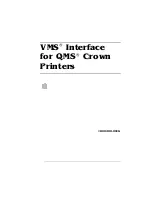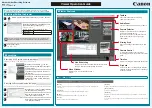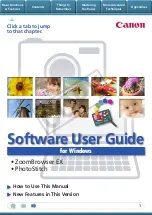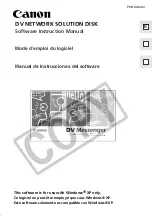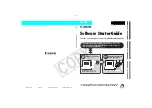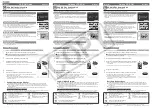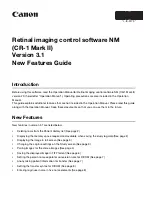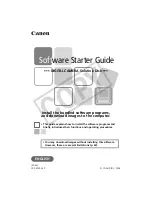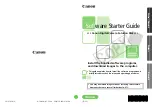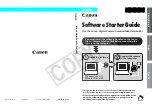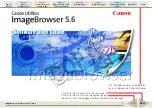
DDc/ci & NaviSet
Introduction
The majority of hardware connected to Windows-based PC systems does not require a large amount of user
configuration after its initial installation. Display monitors, however, are the notable exception. Today’s displays
offer users vast control over their configuration, but this is often through cryptic front-panel controls with
non-standard interfaces, minimal or no localization and minimal assistance to the user.
Consequently, user frustration with display configuration is high, and often display configuration is not optimal.
The set of controls available to the user varies among manufacturers, and even among display models from the
same manufacturer. Often, modifying a setting causes changes in other settings, requiring the user to move
back and forth among several controls to find the right balance.
In attempting to address these issues, vendors have used various methods to allow the operating system to
control the display settings. These controls have taken various forms, but most have several drawbacks,
including:
· Incons
Incons
Incons
Incons
Inconsis
is
is
is
isttttteeeeent Int
nt Int
nt Int
nt Int
nt Inteeeeerrrrrface
face
face
face
facesssss..... The method of connecting the display to the PC for control either requires
additional connections to the display beyond the data connection or requires non-standard signaling over
the data connection. The former results in increased manufacturing costs; the latter may mean that the
display can work only with specific display adapters.
· Incons
Incons
Incons
Incons
Inconsis
is
is
is
isttttteeeeent UIs
nt UIs
nt UIs
nt UIs
nt UIs..... The interfaces often do not follow Windows user interface (UI) guidelines, and may have the
same drawbacks as the built-in display controls: cryptic controls, lack of localization and interdependent
controls.
Both cases can result in increased user confusion and support calls.
Standardization in the control of display configuration provides all-around gains. User confusion and therefore
support calls are lessened, and system integration improved. Manufacturing costs of displays are improved as well.
DDC/CI as an Enabling Technology
Windows operating systems use VESA Display Data Channel (DDC) protocols to retrieve Extended Display
Identification Data (EDID) data from displays through the display adapter driver, which reports the display as a
child device.
The solution to the above problems is for Windows and the display hardware to fully implement VESA DDC Command
Interface (DDC/CI) bi-directional control and to create a Windows-based control panel for the display hardware.
In addition to the inter-integrated circuit (I
2
C) interface for the display itself, many display adapters contain an
interface for other on-board devices such as TV tuners or video capture devices. The I
2
C bus is a standard
protocol two-wire (clock and data) serial data bus that is bi-
directional, but most display adapter drivers only expose the
I
2
C interface to the non-display devices for Windows Driver
Model (WDM) child drivers to use.
Simple changes to what is exposed on the I
2
C interface and to
display adapter drivers allow WDM child display drivers to
control displays by way of the DDC/CI standard. The display
child driver can in turn be controlled by a standard display control panel extension.
DDC/CI Advantages
DDC/CI enables two-way communication between monitors and their video adapters, which provides many
advantages. Today’s monitors do more than merely display text; the best possible display configuration is
mission-critical for applications including digital imaging, pre-press, graphic arts and video production. On-
screen colors that don’t match printed output or are off because of an incorrect setting waste valuable time
“Standardization in the control
“Standardization in the control
“Standardization in the control
“Standardization in the control
“Standardization in the control
of display configuration
of display configuration
of display configuration
of display configuration
of display configuration
provides all-around gains.”
provides all-around gains.”
provides all-around gains.”
provides all-around gains.”
provides all-around gains.”






